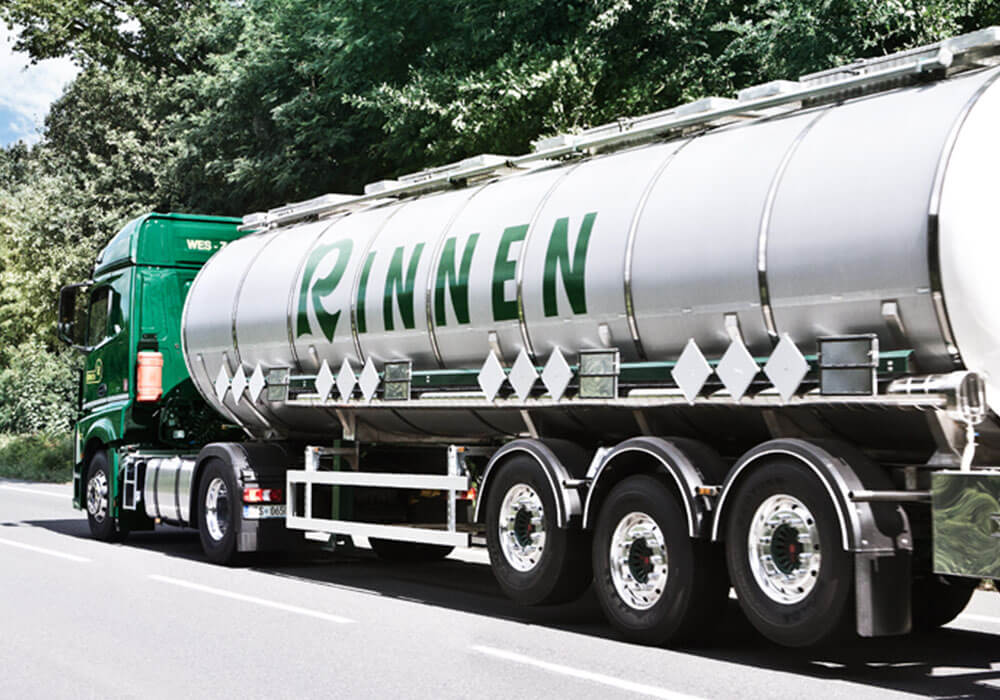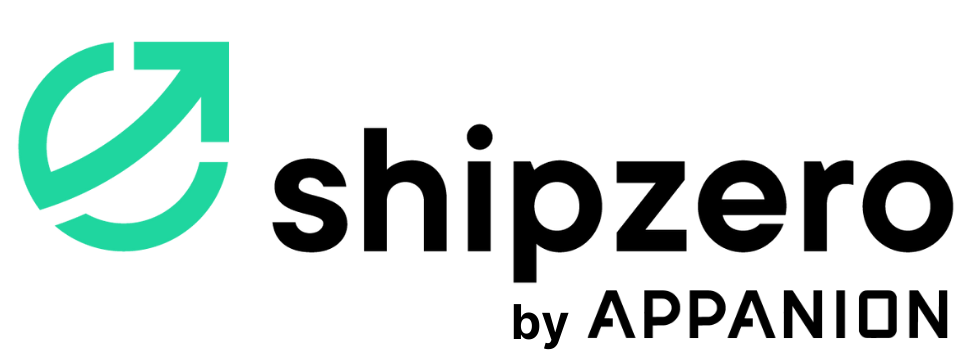“At RINNEN, the topic of sustainability is an essential part of the company’s orientation – with the aim of measuring and reducing emissions in a standardized way. We looked for an external partner because it was important for us to fill the data gaps in our transport chain. We were able to determine the emissions that our trucks emit, but it was challenging with other modes of transport and therefore difficult to allocate data for each order. After all, our customer wants to know the amount of emissions caused by the order and not by the truck. To facilitate this, we wanted to create a clear database and automated processes.”
Jochen Fink, Director EHSQ RINNEN
Summary
✓ Transparency on CO2 footprint in multimodal supply chain
GLEC-accredited calculation of multimodal transport emissions (Scope 1, 3). Emissions are calculated at a precise level by using primary data from fleet telematics.
✓ Automated emissions reports with one click
Simple and automated export of emissions reports for customer inquiries, tenders or audits and assessments. The filter dimensions are numerous. For customer reports, the export is standardized at shipment level.
✓ Comprehensive data management as basis for granular emissions calculation
Secure data exchange via interfaces to telematics and the transport management system. The data runs through a comprehensive analysis process before the emissions are calculated to ensure highest quality.
About RINNEN
RINNEN GmbH und Co. KG is one of the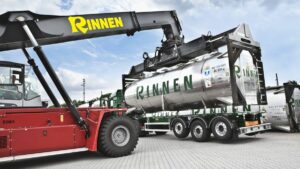 leading logistics providers in the field of liquid and hazardous goods transportation in Europe. Based in North Rhine-Westphalia, the company operates eleven locations in Germany and Europe with over 750 employees. RINNEN’s core competencies lie in the handling of dangerous goods and intermodal transportation. RINNEN’s main mode of transport is road, but intermodal handling with rail and short sea is growing disproportionately.
leading logistics providers in the field of liquid and hazardous goods transportation in Europe. Based in North Rhine-Westphalia, the company operates eleven locations in Germany and Europe with over 750 employees. RINNEN’s core competencies lie in the handling of dangerous goods and intermodal transportation. RINNEN’s main mode of transport is road, but intermodal handling with rail and short sea is growing disproportionately.
Around 150,000 transports are carried out across Europe every year, primarily liquid chemical transports in tank containers and tank trailers. Around 4,000 tank containers are in use at RINNEN. Tank trailers are used particularly in regions where intermodal transport is not yet developed. RINNEN owns around 350 tank trailers and several special jumbo trailers. RINNEN’s logistics locations include garages, storage facilities and, in some cases, cleaning systems. Over 9,000 different chemical products can be processed in the tank cleaning facilities.
Challenges
Reducing emissions as a corporate objective
RINNEN supports the United Nations’ Sustainable Development Goals (SDG) and has anchored sustainable action and management as an integral part of its corporate strategy (see RINNEN sustainability report). However, the basis for an effective climate protection strategy is the calculation of the company’s own CO2 emissions (Scope 1) and a precise understanding of the various sources of emissions. It was therefore RINNEN’s aim to obtain reliable and valid data on its own CO2 footprint with the help of an external partner.
Increasing demand from shippers for emissions data
Due to increasing CSRD reporting obligations on the part of shippers, RINNEN has noticed an increasing demand for transport emissions data. The generation of emissions reports was a complex process that was difficult to manage internally. It was also challenging to map the emissions of individual transport legs for intermodal transports. As a result, there was a growing need for a simple and automated generation of emissions reports at shipment level.
Emission data as part of tenders
Furthermore, proof of verifiable CO2 measurement and evaluation is increasingly being used as a criterion for tenders. More and more shippers expect a reliable supply of emissions data from their service providers in addition to a reasonable price. RINNEN recognized the potential to expand existing customer relationships as well as acquiring new customers and therefore needed automated processes to provide emissions data in a standardized way.
Legal requirements and external audits
The evaluation of GHG emissions is also becoming increasingly important for audits and assessments. As one of the leading chemical logistics companies and a member of the ECTA Responsible Care Program, RINNEN is obliged to submit to the SQAS audit (Safety and Quality Assessment for Sustainability). This serves to assess the quality, safety and environmental compatibility of logistics providers. RINNEN also requires emissions controlling to fulfill the SQAS. In particular, as the requirements in the SQAS have been significantly tightened by an explicit chapter on the “Measurement and Management of transport greenhouse gas (GHG) emissions”. The challenge was to consider upstream and downstream emission values in addition to the directly emitted CO2 emissions.
Actions – the collaboration between RINNEN and shipzero
Data integration and consolidation
First, an interface was created for secure data transfer. This makes it possible to integrate the order data from the transport management system (TMS) into the shipzero data platform. The primary data from the Spedion fleet telematics system was also transferred and merged with the order data from the TMS. This allows transports to be assigned to the corresponding customers and orders. The data is reviewed for errors and plausibility with each monthly transmission (data clarification process), which enables high data quality before the emissions calculation. Input errors such as excessive weights can thus be detected and adjusted. Over 98% of RINNEN’s data is processed correctly. The entire data management process is automated by shipzero and enables a significant increase in data quality, which is not only useful for calculating emissions.
Calculation of Scope 1 and 3 emissions
RINNEN uses the fuel consumption data from its own fleet to calculate Scope 1 emissions, which is the most accurate method of calculating transport emissions. Scope 3 emissions are measured using order data from external service providers in road and rail transport. In general, CO2 emissions in RINNEN’s intermodal supply chains are calculated according to the highest standards of the GLEC framework.
New business through scenario analysis
RINNEN also uses shipzero’s expertise for tenders and to acquire new business. In a first joint project, a scenario analysis for selected transports was conducted. In line with GLEC, this involved determining the emissions that would be generated by potential transports. The forecast was very well received by the client:
„As part of a tender, we were able to provide emission values for the potential transports. shipzero has calculated the emissions data that we anticipate for certain lanes. This was previously not possible for us and enabled us to indicate the CO2 emissions as well as the price. This was very well received by the potential customer and supports our goals of conducting transports as climate-efficiently as possible. shipzero was able to support us competently and at short notice. This was a first success story that we were able to realize right at the beginning of our cooperation.”
Jochen Fink, Director EHSQ RINNEN
Automated emissions reports
Through using shipzero, RINNEN is able to automatically create a multimodal tracking of greenhouse gas emissions. The filter dimensions for reporting are diverse and have been expanded at RINNEN’s request. The chemical logistics company can filter and analyze its emissions data according to individual requirements. The data can be processed and viewed in the data platform or downloaded as an Excel file.
„We are able to classify the total CO2 value into different categories, i.e., well-to-tank and tank-to-wheel. This allows us to say: The direct emission value of a transport is the value X. However, in order to fully evaluate the emissions, the upstream or downstream activities must also be included in the calculation.“
Jochen Fink, Director EHSQ RINNEN
Outlook
The next steps at RINNEN towards full emissions transparency
The first major step has been taken: RINNEN has established transparency regarding the transport emissions of its European and multimodal logistics network. The calculation of the CO2 emissions emitted by its own fleet is even based on primary consumption data.
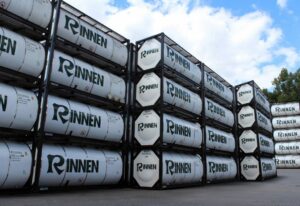
The granular database makes it possible to identify potential CO2 savings in the supply chain and derive measures to reduce them. The foundation for future decarbonization projects has thus been laid: Effective reduction potentials can be determined based on data.
RINNEN is also planning to connect its logistics sites to the shipzero data platform for holistic emissions management. In addition to transport emissions, this will also include emissions from warehouses and transshipment sites, a requirement of ISO 14083 published in March 2023. Tank cleaning processes will also be measured and quantified as part of this process.
